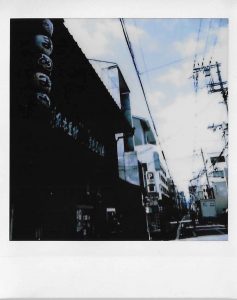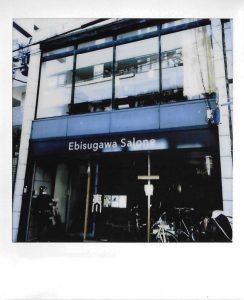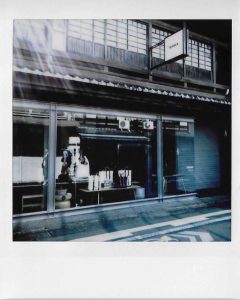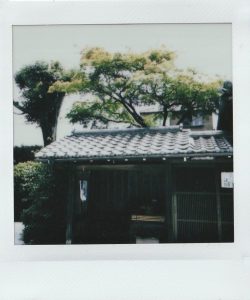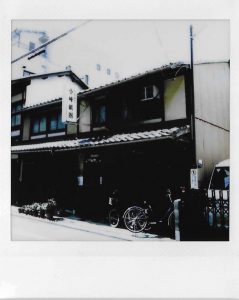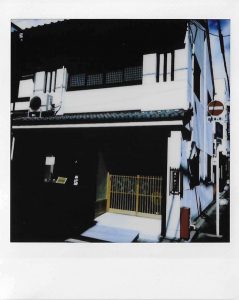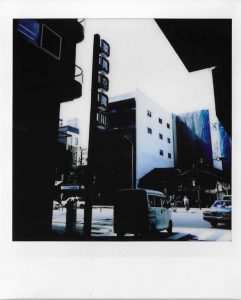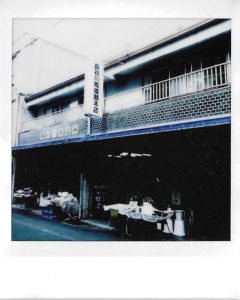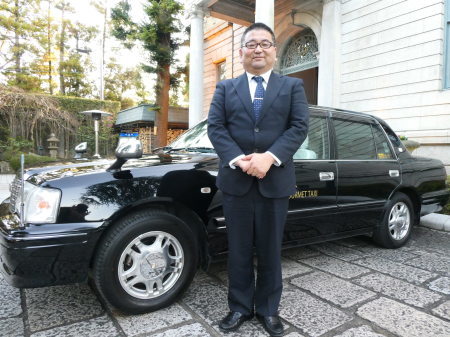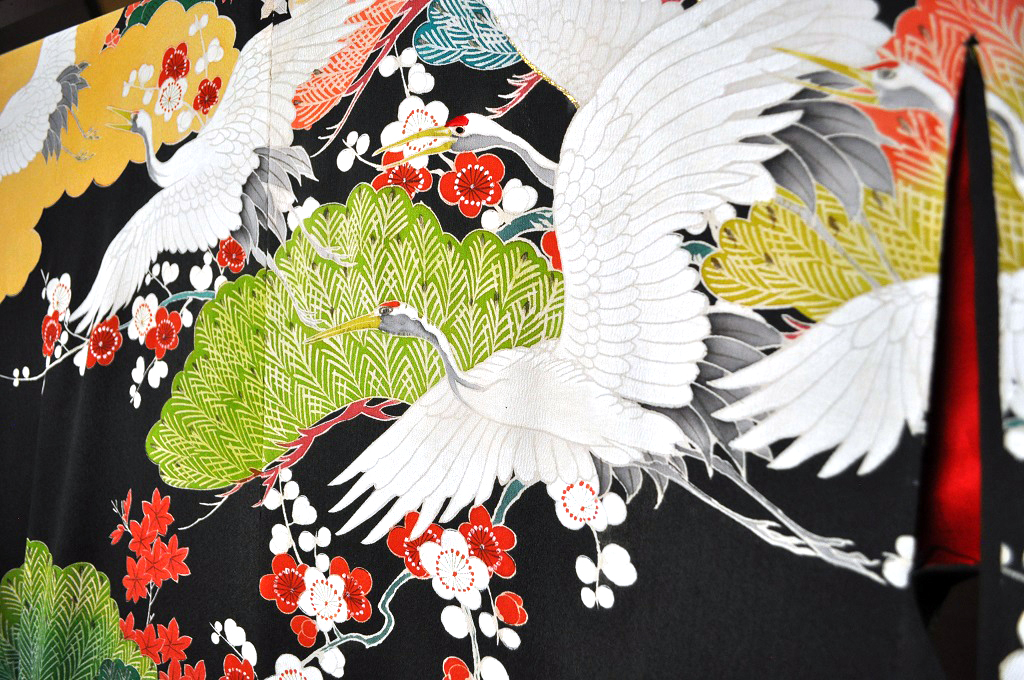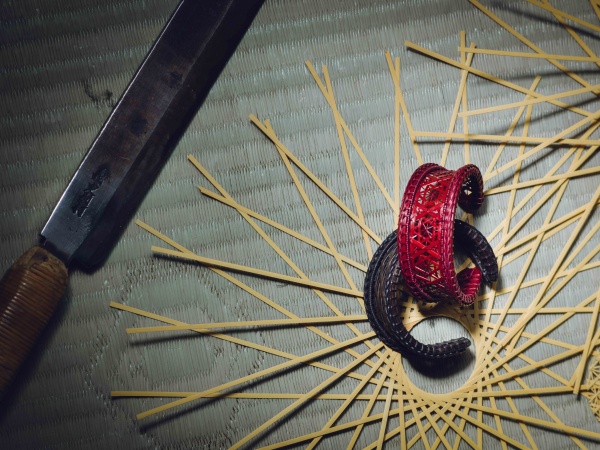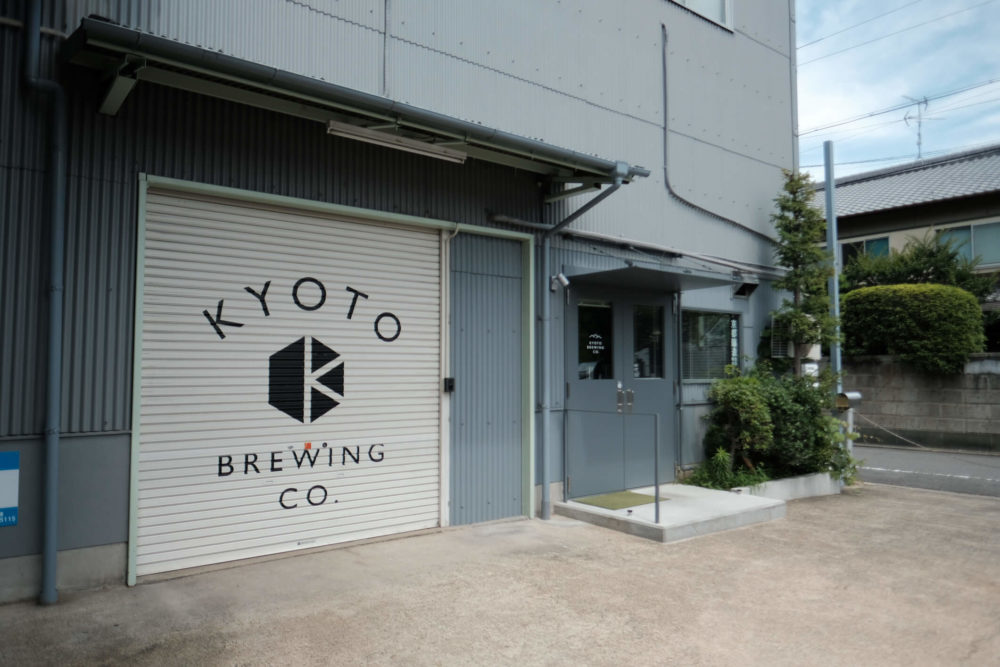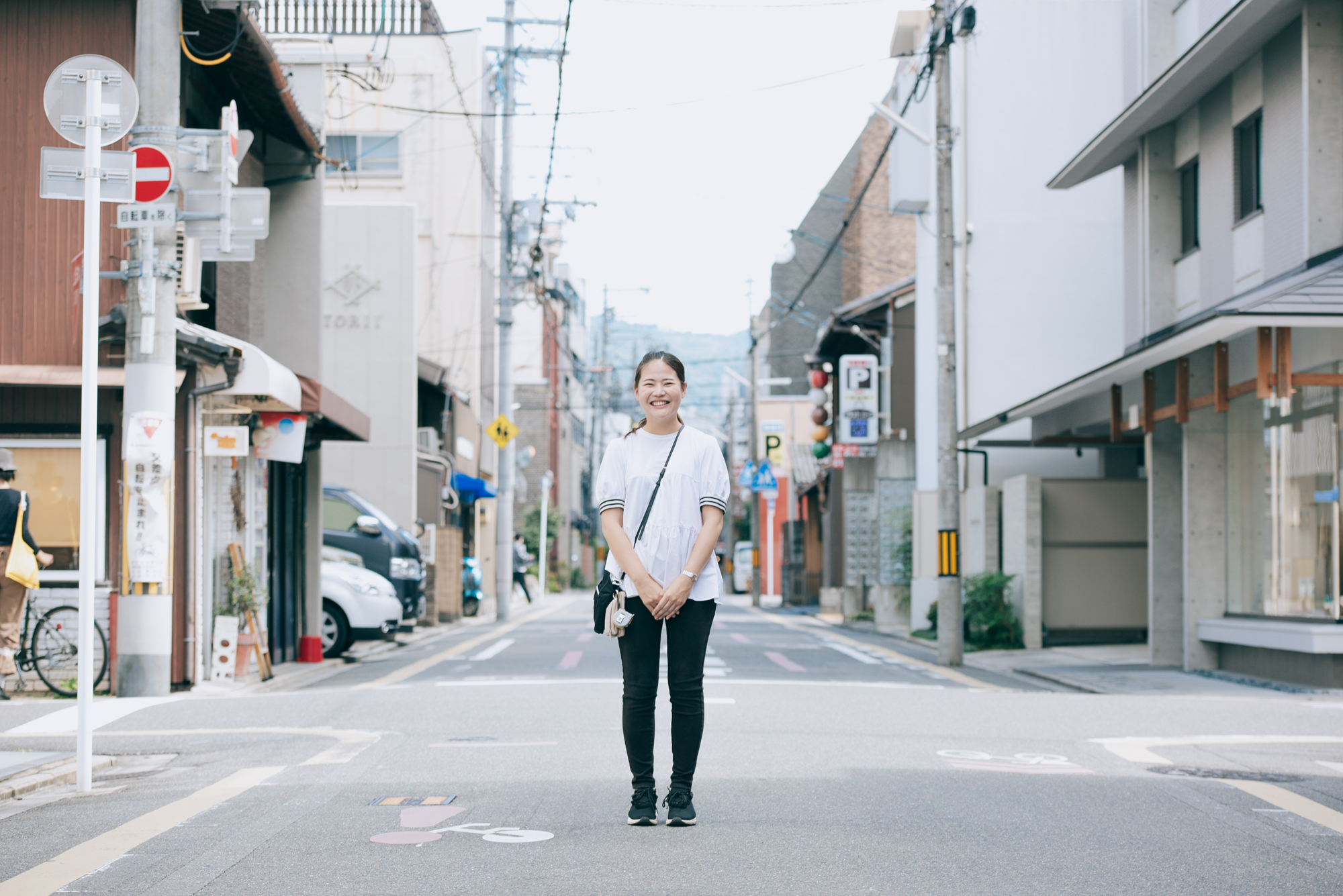
Ebisugawa is the name of the street running a few blocks south of the park surrounding the Kyoto Imperial Palace, locally referred to as “Gosho.” This time, we will be featuring an area of Ebisugawa-dori Street known as “Kagu no Ebisugawa,” or the “Ebisugawa Furniture Street,” between Teramachi-dori and Karasuma-dori where many furniture shops stand. The street has been having a new variety of privately-run specialty shops opening, including ikebana, Baumkuchen cakes, crepes, canvas bags, and coffee shops. They have been bringing some additional elements to this street, changing it into a street of not only furnishing but of lifestyle in general. Our guide to Ebisugawa-dori Street is Anri Miyazaki, the eighth-generation head of Miyazaki Furniture, a shop established in 1856.
Navigator: Anri Miyazaki

Miyazaki Furniture makes high-grade furniture such as tatami chairs and sets of drawers made of paulownia wood (a light-weight, fire and moisture resistant wood) using Kyoto’s traditional wood joinery techniques that do not use nails, and that have been practiced from as far back as the Heian period (794-1185 A.D.). Born and raised in Kyoto, Anri is a down-to-earth Kyotoite who says she has never lived outside of Kyoto. Although she once worked for a company outside of her family business to expose herself to the wider world, she is currently leading a busy life as the eighth-generation head of Miyazaki Furniture and as a mother. Her energetic character seems to shine through her smiling eyes and soft Kyoto dialect.
“There used to be a great number of furniture shops here and each had its own individuality. When I was a kid, I thought of it as a kind of an idiosyncratic, isolated world of furniture shops,” she says. It is not so common anymore in Japan to see streets where furniture shops and interior-decor businesses concentrate, but they used to exist all over the country. While most of these furniture streets have disappeared due to the relocation of shops and urban redevelopment, this part of Ebisugawa-dori Street still retains the old atmosphere of a furniture street with many shops still continuing business.
Various specialty shops have gathered on this street, each handling a type of furnishing such as furniture, glass panes, tatami, carpets, door and window fittings, or tableware; making this street a one-stop place for furnishing a home. “There is a sort of a mutual-aid relationship businesswise, since each of us specializes in our own thing,” Anri says. She refers her customers to other shops in cases where she thinks those shops may have something better for them.
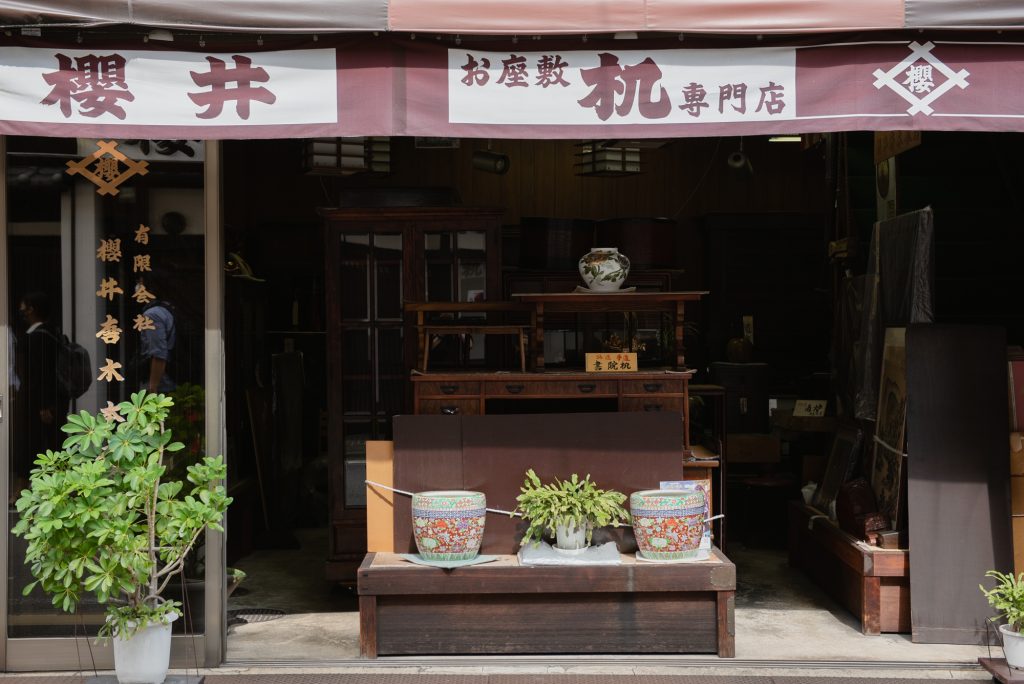
A shop that specializes in Japanese-style desks
The origins of Ebisugawa-dori Street as a furniture street go back to around the end of Japan’s feudal era, when shops selling household goods gathered along this street at a time when Kyoto was recovering from the devastation of the great fire caused by the Hamaguri Gomon Incident in 1864. The area then evolved into a specialty-store district for furnishings that included hibachi braizers, metal hardware, and door and window fittings. If you would mention “Ebisugawa Furniture Street” to a Kyotoite, he or she would know what you were talking about. However, after its heyday, which was around the early 1980s, this furniture street started to decline. Many shops closed down as people living downtown moved to the outskirts in what was known as the “Donut Phenomenon.” For a while, it seemed like the furniture street would soon disappear. However, “Things have been looking different in the past five years or so. Large residential buildings started to rise on lots where some closed-down furniture shops had stood, the lots of furniture shops being relatively spacious,” Anri says. The influx of new residents turned this area into a lively residential neighborhood, with young parents taking their children to school on bicycles in the morning, and children’s voices echoing from the nearby elementary school.
It was around this time that small shops specialized in baumkuchen cakes, coffee, chocolate, and other things besides furnishings started to appear. As more of these new shops opened, Ebisugawa-dori Street saw a change in the mix of the people visiting the street as it started to attract more tourists and young people.

A typographic design of the kanji characters for Ebisugawa
Ebisugawa Salone started in 2020, aiming to present new styles of “the third place,” a word coined for a place where an individual can spend time outside of home or workspace, through exhibitions and other types of events on Ebisugawa-dori Street. This was a project by mui Lab, a startup company that develops IoT products integrating wood and information technology like furniture. “I can see that he (mui Lab’s Mr. Hirobe) is exploring ways to revitalize this whole area, so if perhaps there’s anything I can do to help, I’m keen to cooperate,” Anri says.
A street where furniture shops lined up, attracting many people
“There used to be a lot more furniture shops along this street. A furniture fair was held every autumn, attracting a lot of people. It was lively back then,” Anri says. The scenery has changed since then. Many large residential buildings stand along the street now, creating a scenery that is quite different from how the area must have appeared in the past. If you walk around, you will find some old shops such as furniture shops, glass shops, and tatami shops that remain from the time when this place was a flourishing furniture street, but it is no longer the place that Anri recalls, where furniture shops were lined up among many traditional machiya houses. Anri says she was born and raised in a machiya herself. “They get super-cold in the winter and super-hot in the summer,” she says. “Life has been a lot easier since we built our new house. That being said, it feels a little sad that a lot of the machiya houses disappeared.”
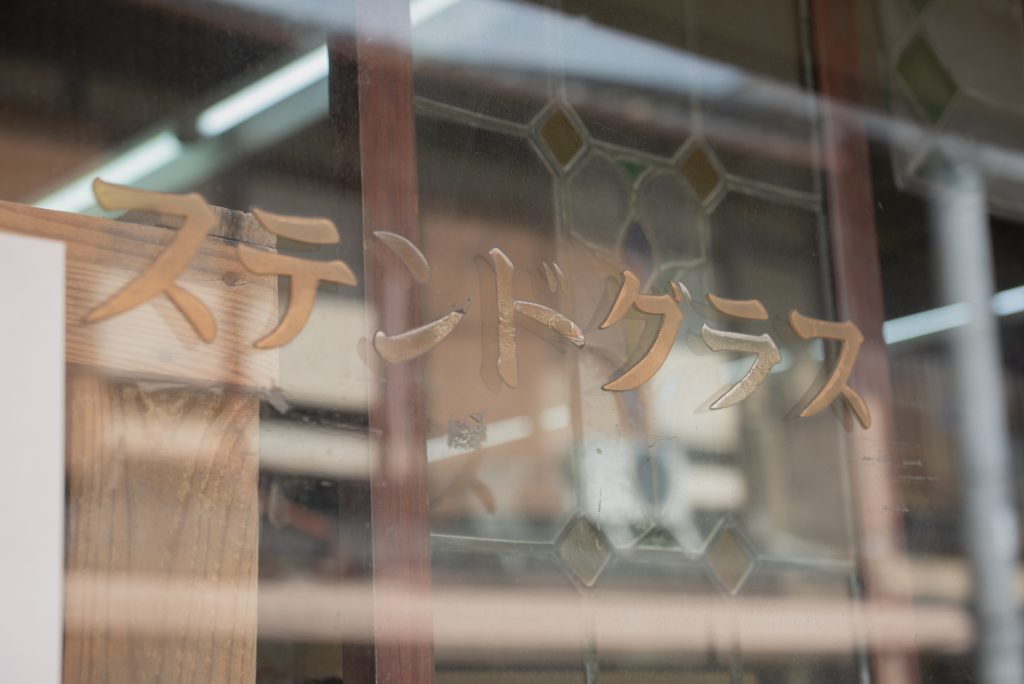
A shop specializing in stained glass
Changing times, changing forms of business
Miyazaki Furniture was founded in 1856, and it started out by producing and selling wooden hibachi braizers. Today, it does order-based production of paulownia drawers and tatami chairs. It is also doing a lot of cleaning and restoring paulownia drawers as well as repairing other furniture recently. New paulownia drawers do not sell very often, as they are durable and typically last for three generations or more, but it is possible to make them look brand-new by cleaning. Miyazaki Furniture also makes use of traditional techniques to perform modifications and repairs such as changing the length of the legs of furniture or reupholstering old chairs. Although it is her own family business, Anri says she is still surprised that “such niche services, surprisingly, have sufficient demand to carry on as business.”
“We consider it undesirable to broaden the range of products and services too far from the original furniture business,” so Miyazaki Furniture has steadily focused on its main products. And having such a cultivated specialization, “We eventually began to accept repairs for furniture that people bought from other places,” says Anri. Currently, forty percent of its customers consists of people who bring their furniture for repairs or paulownia wood sets of drawers for cleaning

Paulownia chests of drawers
Miyazaki Furniture now uses tools such as Instagram to reach out to more people and advocate how rewarding it is to pass down furniture through generations. This has been bringing a wide range of new customers responding to information on the internet or their Instagram posts. Anri describes the current clientele as various, including “young people who inherited furniture from their grandparents, older people, and people who just need their furniture’s legs cut in order to adjust the height.”
Artisans are essential to this street
Europe has a well-established culture of repairing and passing down furniture for generations. In contrast, the practice of buying and then throwing away mass-produced, low-priced furniture has been the norm in Japan since the period of rapid economic growth in the 1960s. Now, the generations that grew up among such mass-produced furniture view the practice of using furniture for generations, or of repairing them to make them last, with fresh enthusiasm.
Moreover, as society places importance on environmental or ethical values, Miyazaki Furniture is gaining fresh recognition with the reliable skills and techniques that artisans have cultivated by working with furniture for years. “Repairs can be pretty difficult,” Anri says. “Using self-taught methods to repair furniture can end up making them worse, and there are a lot of methods, and a lot of things that require accumulated experience to do properly.” Many of the machiya that used to stand in this area housed both the homes and the workshops of artisans. They were places where life and craft closely intertwined. Ebisugawa-dori Street developed together with craftsmanship as it employed and passed down the skills of these artisans.

“Ebisugawa Furniture Street”
Ebisugawa-dori Street evolves today as a commercial street catering to a broader spectrum of life and lifestyle-related demands with new artisan shops, such as specialty coffee and baumkuchen cake shops. “Various specialty shops concentrate here even though it is not really a busy commercial area, and that makes it charming,” Anri says. As she says, this street is not so busy, and it is not very long either, but it makes people feel like visiting again and again, stopping by at each shop. It may be the perfect place to find a special something that can only be found here.
The Ebisugawa-dori Street through the eyes of Anri Miyazaki
